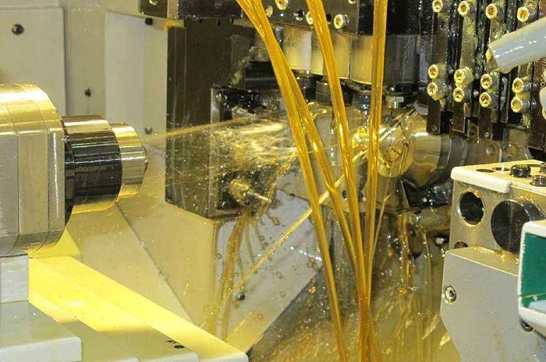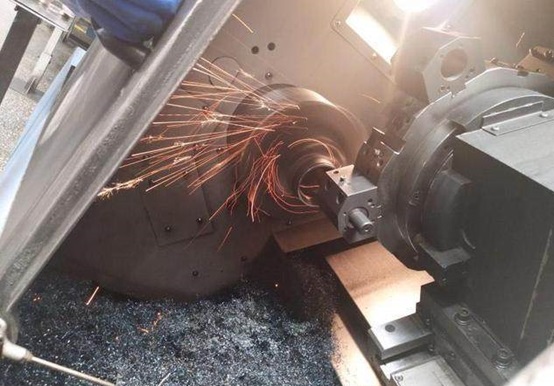9 Knowledge of Machining Hard Materials
You often encounter the so-called "hard-to-machine materials" in mechanical processing. These materials are difficult to cut, also known as hard materials. These hard materials are mainly high-strength and ultra-high-strength alloy structural steel, high manganese steel, stainless steel, and alloy resistant Grinding cast iron, chilled cast iron, high-temperature alloy, medium-hard quenched and tempered steel, martensitic hardened steel.
Knowledge1: why these materials are difficult to machine
These materials can increase the cutting force during the cutting process, increase the cutting temperature, increase the wear of the tool, and shorten the service life of the tool; below are 7 characteristics of these hard materials.
① High hardness;
② High strength;
③ High plasticity and high toughness;
④ Low plasticity and high brittleness;
⑤ Low thermal conductivity;
⑥ There are a lot of microscopic hard spots or hard inclusions;
⑦ Chemically active.
Knowledge 2: How to choose the cutting fluid correctly when cutting difficult materials
When the material contains chromium, nickel, molybdenum, manganese, titanium, vanadium, aluminum, niobium, tungsten and other elements, they are all called difficult-to-cut materials. These materials have many hardpoints, great mechanical abrasion, low thermal conductivity, and easy chip spitting. The cutting fluid must have good lubricity and cooling.
1. When cutting hard-to-process materials with ultra-hard high-speed tool steel tools, extreme pressure emulsion or extreme pressure cutting oil with a mass fraction of 10% to 15% should be used.

Cooling process using extreme pressure emulsion
2. When cutting hard-to-machine materials with cemented carbide tools, extreme pressure emulsion with a mass fraction of 10% to 20% or vulcanized cutting oil should be used.
Knowledge 3: Cutting of high-strength and ultra-high-strength steel
1. The Hardness after quenching and tempering can reach to HRC35-55. High-strength steels and ultra-high-strength steels have higher strengths and low thermal conductivity, so the cutting force is large, the cutting temperature is high, the tool wears fast, the tool life is short.
2. High-strength and ultra-high-strength steels must use tool materials with high wear resistance. For high-speed finishing, YT alloys with high TiC content and tantalum-niobium addition, TiC-based and Ti (C, N) -based cemented carbide, coated cemented carbide, and composite A1203 ceramics should be used. For example, when turning materials 38CrNi3MoVA and 35CrMnSiA, a smaller main declination angle kr and a larger tool nose radius rε should be used. The amount of cutting, especially the cutting speed, should be lower than that when processing medium carbon normalized steel. Use cutting fluid and chip breaking measures as much as possible to improve cutting conditions.
Knowledge 4: Cutting of high manganese steel
1. Typical grades of high manganese steel are Mnl3, 40Mnl8Cr3, 50Mnl8Cr4, etc. After water toughening, the metallographic structure is uniform austenite. Although its original hardness is not very high, but its plasticity and toughness are particularly high, work hardening is particularly serious. After hardening, it can reach about HB500. During the cutting process, a high hardness oxide layer (Mn203) will also be formed on the surface of the workpiece. Its thermal conductivity is very small. Therefore, the cutting temperature is very high, and the cutting force is increased by about 60% compared with when processing 45 steel. High manganese steel is more difficult to process than high strength steel.
2. For processing high-manganese steel, tool materials with high hardness, certain toughness, large thermal conductivity, and good high-temperature performance should be selected. For rough machining, YG, YH or YW cemented carbides can be used; for finishing, YT14, YG6X, and other alloys can be used. Our practice shows that the use of composite alumina ceramic high-speed precision turning high manganese steel has a very good effect.
Knowledge 5: Machinability of cast iron and hardened steel
1. The hardness of chilled cast iron is extremely high, the plasticity is very low, the cutting force and cutting heat are concentrated near the cutting edge, so the cutting edge is easily broken. The structural dimensions and machining allowance of chilled cast iron parts are generally large, and the blank precision is low, which further increases the difficulty of processing.
The use of composite alumina or silicon nitride ceramics for the finishing and semi-finishing of chilled cast iron is very effective, and the tool life and productivity are significantly improved compared to cemented carbide.
2. The structure of hardened steel is tempered martensite, the hardness is above HRC60, and the plasticity and thermal conductivity are very low. Its workability, tool material and tool geometry parameters are basically the same as chilled cast iron. For finishing them, CBN tools can be used.
Knowledge 6: CBN tool

CBN tool turning
1. CBN tool introduction
The CBN tool was first made by General Electric (GE), and its hardness is second only to diamond and much higher than other materials.
CBN tools are used for cutting high-hardness materials and difficult-to-machine materials, such as hardened steel, high-alloy wear-resistant cast iron, high-temperature alloys, high-speed steel, surface spray welding materials, sintered metal materials and other difficult-to-machine materials.
2. Performance characteristics of CBN tool
(1) Good impact resistance
In the field of roughing, no chipping or chipping during use
(2) High hardness and wear resistance
The microhardness of CBN single crystal is HV8000 ~ 9000, which is the second highest hardness material known at present. The hardness of CBN composite sheet is generally HV3000 ~ 5000.
(3) Has high thermal stability and high temperature hardness
The heat resistance of CBN can reach 1400 ~ 1500 ℃, and the hardness at 800 ℃ is the normal temperature hardness of Al2O3 / TiC ceramics.
(4) High chemical stability
CBN has a high oxidation resistance and does not produce oxidation at 1000 ℃, nor does it react with iron materials at 1200 ~ 1300 ℃.
(5) Has good thermal conductivity and low friction coefficient
3.CBN tool can cut the following materials
(1) High-hardness cast iron (hardness above HRC75): such as high-chromium cast iron, alloy cast iron, nickel hard cast iron, and white cast iron are all high-hardness cast iron. Typical parts include rollers and industrial pumps.
(2) High-hardness steel parts (hardness HRC45-68): such as high-manganese steel, high-speed steel, hardened steel, etc. Typical parts include rolling mortar wall, high-speed steel roller, hardened gear / gear shaft, bearing, ball screw , Mold, etc.
(3) Ordinary gray cast iron (HT150 / 200/250/300): such as engine block / cylinder head, brake disc, brake drum, pulley, clutch pressure plate, etc. are all gray cast iron parts.
(4) Other difficult-to-process materials: such as powder metallurgy, high-temperature alloy materials, and nickel-based, iron-based, cobalt-based and other high-hardness surfacing / spray welding / laser cladding / thermal spray material workpieces.
Knowledge 7: Processing of pure metals
Commonly used pure metals such as copper, pure aluminum, pure iron, etc. have low hardness and strength, large thermal conductivity, which is beneficial to cutting processing; but their plasticity is high, chip deformation is large, and the contact length of the chip is large, and it is easy to occur Cold welding generates a built-up edge, so the cutting force is large, it is not easy to obtain good processed surface quality, and it is difficult to break the chip. In addition, their linear expansion coefficient is large, and it is not easy to control the machining accuracy of the workpiece during finishing.
For processing pure metals, high-speed steel tools or carbide tools are recommended. YG or YW cemented carbide can be used to process copper and pure aluminum, and YT or YW cemented carbide can be used to process pure iron.
Knowledge 8: Machining Stainless Steel
The composition of austenitic stainless steel is mainly chromium, nickel and other elements. After quenching, it has an austenite structure, and the machinability is relatively poor.
(1) The plasticity is large, and the work hardening is very serious. It is easy to generate built-up edge and deteriorate the processed surface quality.
(2) Small thermal conductivity and high cutting temperature.
(3) Due to the high cutting temperature, severe work hardening, and the presence of carbides (TiC, etc.) in the steel, forming hard inclusions, and easy cold welding with the tool, the tool wears out quickly and the service life is reduced.
Knowledge 9: Machining titanium
Titanium alloys also have poor machinability, fast tool wear and low tool life due to the following reasons:
(1) However, the chemical properties of titanium are active, and it is easy to combine with oxygen, nitrogen and other elements in the atmosphere at high temperature to generate hard and brittle substances, which exacerbates tool wear.
(2) The thermal conductivity is extremely small, so the cutting temperature is very high.
(3) The processed surface often has a hard and brittle skin
Titanium alloys are recommended to use YG and YH alloy cutters.


